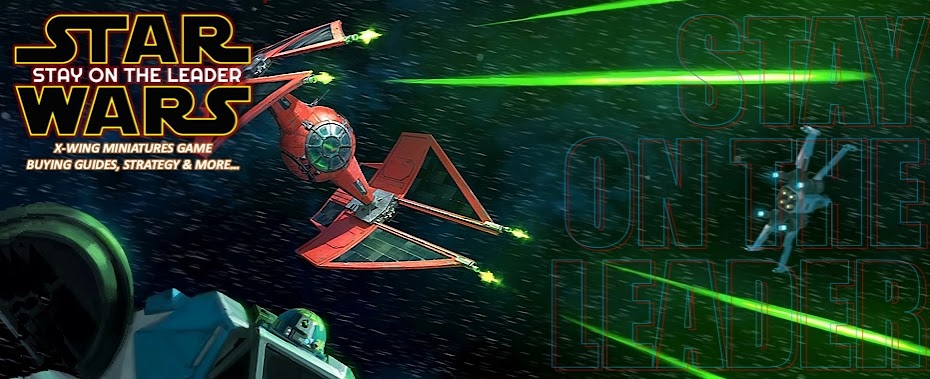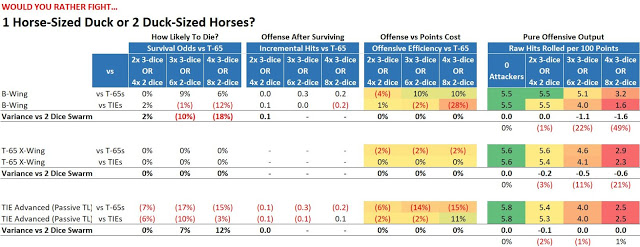So I was really proud of my last blog. It was on a topic I'd been wanting to hit for a while (the importance and value of variance), the juxtaposition of the two different player reactions from one tournament seemed like a perfect hook for the topic, and talking to Niels Vos gave me loads of extra unexpected colour and dimension to the blog as it turned out he shared a lot of my viewpoints. I thought it was great, wrapped the whole thing up with a nice bow on top and posted it up online to await all the positive feedback.

The unintended consequence was that a few people thought the blog was about picking a fight with World Champ Oliver Pocknell, or running him down for the post of his that I'd shared in the blog. Hopefully I've now smoothed most of those ruffled feathers out but I wanted to be clear that it wasn't my intention at all. I like and respect Oli a lot, we share some of the same online spaces and chat from time to time, and as a World Champion you couldn't really ask for somebody who has worn the crown with more dignity and tried to be a positive role model across not just his own channels but lots of other podcasts and streaming channels as well. I was taking it as read that everyone shared that very obvious opinion of Oli and to me it made it all the more interesting to finally see it slip a little bit in that Facebook post and see what really grinds his gears.

I've said it elsewhere and I've said it to Oli himself, but for the record: that wasn't my intention and I'm sorry if anybody took it that way and was unhappy with how I'd phrased anything.
The great consequence of the blog is that we've had some really interesting discussions around the topic on places like Facebook and Reddit, both about the nature of variance but also about the state of the current metagame. I think there's been a bit of confusion in the message in my blog here, with a lot of people believing that my defense of the variance in playing higher ship count generic squads was also saying that I thought the current metagame was in a good state. To me those are two separate issues - I absolutely want to see high ship count squads like this possible and I want to see the variance that allows upsets against good players and creates exciting games with uncertain outcomes to continue... but I also think the swing towards low cost generics has gone too far right now.
On some specific points costs I completely agree with Oli and would actually go further than I think he would. Like I said in the blog: I know why I'm playing Scyks - it's because I think they're too cheap and hand me a big advantage!
Now if the World Champion can click his fingers and get Nantex nerfed instantly (I kid) then let's see if I can work some magic too...
THE PROBLEM
The game is trapped in a mechanical feedback loop by making cheap ships with 2 red dice and either 3 Agility (or 2 Agility and lots of hull) very efficient.
When 3 Agility is good people play Scyks/FOs/Nantex/Aggressors etc and that in turn means the average number of dice/hits rolled per attack drops (you go from flinging 3 or 4 well-modified red dice to more ships each rolling 2 single-modified attacks). When the average number of hits rolled per attack drops it makes high Agility more important as you're more likely to evade attacks entirely, while Agility 1 ships will still get chipped down rapidly by lots of incoming shots. I talked about this impact when I revisited Generic Efficiency: 1 Agility ships get a lot worse when facing 2 red dice while 3 Agility ships benefit.
So Agi 3 is good which makes 2 red dice dice popular with makes Agi 3 better which makes 2 red dice more popular which makes Agi 3 better again...

With so many arcs on the table (including dangerous range 3 cannons, or multiple arcs with turrets) it's incredibly difficult to fly aces into safe positions, and because the ships carrying those guns are defensively efficient those aces can't reliably switch modes and try to punch through and remove threats before they fire. And it's not just aces that suffer - the sheer defensive efficiency of these ships is what I first highlighted and it's what makes it almost impossible to joust them with the likes of Rebel Beef or four-ship Resistance/Rebel lists - you have to work incredibly hard to kill a 25pt TIE/fo before it fires and even if you're lucky enough to do so you're likely to lose 50pts of Braylen Stramm in return. Similarly, if you invest in big alpha strikes with torpedoes it's an unreliable payoff as a 3 Agility ship could easily see just a little bit too much paint on their green dice and the attack bounces off, and if you try to run big ships like Falcons or Dash your traditional advantage of having lots of hitpoints will be burned away very quickly by so many guns.

With few exceptions (Boba is still good in this metagame) what you're left with is fighting fire with fire, and every player that turns to playing these lists just adds further momentum to the metagame shift and makes it harder for everyone else.
If you'd followed my blogging this past 12 months none of this should be news to you as I've hit this topic many times, especially before the pandemic derailed everything:
December - Generic Efficiency 101
January - First Order & Separatists swarms in Hyperspace, including predicting the Hyena Bomber's rise
February - Sloane Swarm and the Scyks/Fang list bag me a ticket to Worlds
March - Generic Efficiency Revisited and more Scyk Swarms
And I've also spoken about some of these issues in places like the FFG Forums:
June - TIE Aggressors are a sleeper
I believe we've been on this road for over a year and although the maturation of this metagame has been hampered significantly by Covid and the Nantex but it's been pretty much inevitable that we would get here as the fundamental maths of X-Wing combat are out of balance. Without a proper competitive season in the first half of the year players like Akhter Khan and Nicolas God were finding it and leading other players to joining them in the summer. After the July points changes the Nantex did a fantastic job of suppressing all the swarms for a few months but I fear you're going to see it in full effect now, though.
THE SOLUTION
I would increase the following ships cheapest generic pilots points cost by +1 point:
- Vulture Droid
- Hyena Bomber
- M3-A Scyk
- Fireball
- TIE Aggressor
- TIE Bomber
- TIE Advanced v1
- TIE/fo
- Auzituck Gunship
- T-70 X-Wing
There might be some following points cost through the lower end of the other points ranges, eg if you make Epsilon Cadets +1pt you'll need to move the Zeta up from 26pts. You probably wouldn't have to increase Lieutanant Rivas, though, as this points change is aimed at the multiplicative value from bringing lots of the cheapest ships and you can only bring one Lieutenant Rivas.
Now when I've suggest these type of changes to so many ships one of the common responses I have received is something like "Wait, why are you putting up the cost of [insert ship here]? The [insert ship here] is hardly dominating tournaments!". And it's a fair question because you're right, they're not. Yet. These changes are needed to solve future problems too. A month ago nobody thought the TIE Aggressor was a problem (except me) because the focus was on the Nantex. When people were celebrating the Nantex points changes I always cautioned that all this was doing was unlocking all the other cheap generics that the Nantex were oppressing and that's what we're seeing now.
ALL of these ships are too cheap. In most cases they're unbalanced vs other competing cheap ships (TIE Fighters, RZ-1 A-Wings, Torrents etc) and their sheer efficiency is suppressing a host of more expensive 3-dice ships and making it extremely challenging to fly lower ship count lists. In other cases (like the Auzituck and T-70) they're a little too far ahead of the other 3-dice ships and would remove diversity once the swarms were removed.
It's like peeling an onion - remove Nantex and now TIE Aggressors are a problem. Remove Aggressors and it'll be Scyks and TIE/fos. Remove Scyks too and it'll be TIE Bombers and the Vulture/Hyena swarms will be back with a vengeance (it's the 3 Agility swarms keeping Vultures down as their red dice bounce off a little too often). If you're going to wait for 6 month point cycles between each little change to the current best thing then we'll still be playing this high ship count metagame in two years time.
And you know what? A 26pt TIE/fo or Scyk is STILL really good value. Although hitting so many ships may look dramatic I think it's actually conservative and may not be going far enough - in most cases it's still lower than the ships were costed originally and it's still a significant discount on their First Edition price point. We're not bombing these ships back to the stone age by adding +1pt, just clipping their wings slightly... and quite possibly by not enough.
I'd like to hold a principle where ships like these remain about as good as it gets for generic efficiency on the cheapest ships. We've seen that if things get much better than this point then the game can quickly spiral to the point where most other styles of play are driven away.
- TIE Fighters
- Mining Guild TIE
- Z-95 Headhunters
- Torrents
- RZ-1 A-Wings
Ships like the TIE/sf or the RZ-2 A-Wing I think are fine. The TIE/sf is probably a victim of this trend as much as a part of it, while the RZ-2 A-Wing is doing well but it's not an I1 generic spam issue that's driving that success.
AND ANOTHER THING...
In addition I'd prefer to see Cannons upgrades given a variable points cost based on the primary front arc attack value of the ship. When you add an Ion Cannon to an M3-A Scyk you're gaining an extra red dice to roll, and unlike Missile or Torpedo upgrades there's no awkwardness of getting target locks that red dice is easy to use and has no charges to use up. I don't believe it should cost as much to add a cannon to a B-Wing or Upsilon Shuttle as it does to add them to an M3-A Scyk or a Jumpmaster where you're gaining a whole new arc.
This change wouldn't just be about sitting on Scyk Swarms as much as a quality of life change that would encourage players to bring cannons more often on all those ships that have unused cannon slots. Some ships may need a base points adjustment where the design intention is they use a cannon, eg. the base TIE/rb Heavy cost could come down to the keep the TIE & Cannon cost where it is.
SUMMARY
Variance good. Uncertainty good. Excitement good. Oliver Pocknell good. Scyks... too good.
Let's see if my finger snap works or not. As much as I love playing generic swarms there's a hell of a lot of pilots that have been effectively erased from existance right now and I'd like to see them back on the table.







































